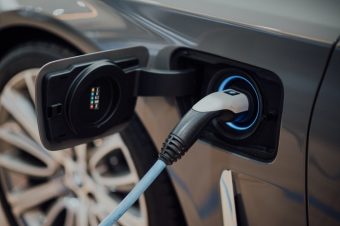
Average CO2 emissions from all new cars registered in Europe in 2023 continued to decrease and were 1.4 per cent lower than in 2022, according to new provisional data published by the European Environment Agency. Similarly, average CO2 emissions from new vans continued to fall, and were 1.6 per cent lower than in 2022. The reductions in emissions from new cars and vans are related to the growing share of fully electric vehicles.
The data published by the European Environment Agency (EEA) are based on information provided by European countries, including details on all newly registered cars and vans.
These provisional data show that, in 2023, 10.7 million new cars were registered in Europe, which translates to an increase of 13.2 per cent compared to 2022. Almost a quarter of these new car registrations were electric – either fully or plug-in hybrid. Among the reporting countries, the fleet share of electric cars was highest In Norway, Sweden and Iceland, reaching 90.5 per cent, 60.7 per cent and 60.4 per cent, respectively.
In 2023, 1.2 million new vans were registered in Europe, which is 20.2 per cent above the 2022 levels. The share of electric vans reached 8 per cent in 2023. More than half of the fully electric vans were registered in three countries: France, Germany and Sweden.
More:
- SUVS ARE SETTING NEW SALES RECORDS EACH YEAR – AND SO ARE THEIR EMISSIONS
- ETHIOPIA IS THE FIRST COUNTRY IN THE WORLD TO BAN THE IMPORT OF FOSSIL FUEL VEHICLES
- EU NEEDS 8 TIMES MORE CHARGING POINTS PER YEAR BY 2030 TO MEET CO2 TARGETS
Key figures — new passenger cars
- Total registrations: 10.7 million (+13.2 per cent compared to 2022)
- Average CO2 emissions: 106.6 g CO2/km (-1.4 per cent)
- Share of electric cars, including plug-in hybrids: 23.6 per cent (up from 23 per cent in 2022)
- Share of fully electric cars: 15.5 per cent (up from 13.5 per cent in 2022)
- Average mass: 1,545 kg (+1.3 per cent)
Key figures — new vans
- Total registrations: 1.2 million (+20.2 per cent compared to 2022)
- Average CO2 emissions: 180.8 g CO2/km (-1.6 per cent)
- Share of fully electric vans: 8 per cent (up from 6 per cent in 2022)
- Average mass: 1,896 kg (+1 per cent)
The transport sector represents about a quarter of Europe’s greenhouse gas emissions, with about three quarters of transport emissions stemming from road transport. The EU’s goal is to reduce greenhouse gas emissions from transport by 90 per cent by 2050 compared to 1990 levels. For all new cars and vans, the target is to achieve zero emissions from 2035 onwards.
About the vehicle data
The EEA collects and makes available information new vehicles registered in Europe in accordance with Regulation (EU) 2019/631. These data are based on the Worldwide Harmonized Light Vehicle Test Procedure (WLTP) and include new vehicle registrations in EU Member States, Iceland, and Norway. The data released today are based on data provided by countries and remain provisional until vehicle manufacturers have reviewed them later this year in order to correct factual errors. The EEA will subsequently publish the final datasets and the European Commission will confirm whether individual manufacturers or pools have met their annual specific CO2 emission target.
While today’s provisional datasets reflect the CO2 emissions calculated through laboratory testing, the EEA also publishes data about real-world CO2 emissions and fuel consumption of cars and vans. These data, recorded with on-board fuel consumption monitoring (OBFCM) devices, are used to document and monitor the gap between emissions and fuel consumption in laboratory testing and on the road. More information and analysis on these data are provided by the European Commission.
Source: EEA

